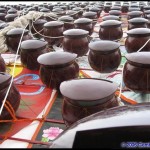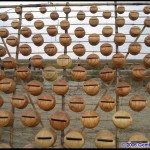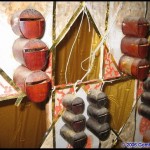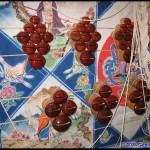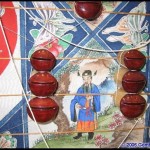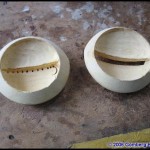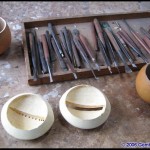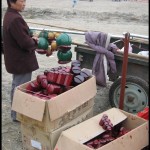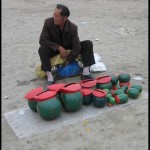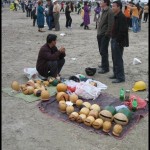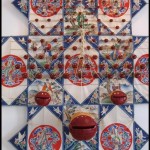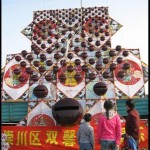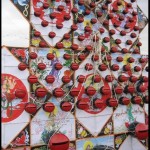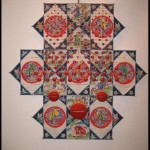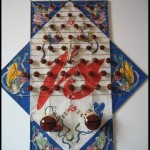I’m flying home today after five days in Nantong, China — home of the exquisite whistling kites. Titles are everything here. And so I had attended the Yangkou Port Cup, the Nantong International Kite Festival, and the China Domestic Kite Contest – all combined on one dusty beach at the edge of the East China Sea.
 I’d come as a guest of the Chinese Kite Association. And after seeing copies and a few rare examples, I was anxious to get a close look – or perhaps more appropriately – a close listen to the amazing flying creations made here.
I’d come as a guest of the Chinese Kite Association. And after seeing copies and a few rare examples, I was anxious to get a close look – or perhaps more appropriately – a close listen to the amazing flying creations made here.
I wasn’t disappointed.
For over a thousand years, Nantong folk artist have produced a unique hardwing kite. The bamboo framing and silk covering are shaped in geometric patterns with each section painted with traditional designs.
Remarkably then, anywhere from a dozen to several hundred carved wooden whistles are attached to the kite. The whistles are either cylindrical or orb shaped. Cylindars are usually glued direct to the sail, while the orbs are tied to a light framework which is then fastened to the kite.
The object is not just to create noise – which is certainly done. But by matching the whistle sizes and coordinating tones, kitemakers aim to create a “symphony in the sky”.
The sound is not unlike a steam whistle blown by a passing locomotive. Fliers slacken lines and then pull in to generate rhythm. And with some of the whistles taking on proportions of two or more feet in diameter, the ‘symphony can get pretty intense!
Chinese kiters are notorious for flying high and constantly urge guests to let out more line. That’s ironic, because up close, the kites are delightful. Even without the musical element, Nantong kites are treasures. And so the festival becomes a treat for both the eyes and ears.
As I said, there are two types of Nantong whistles. The cylindrical pieces are made from bamboo, shaved down to a paper-like thinness to lighten weight and increase reverberation.
The orb-shaped whistles are made from matched gourds with carved wooden caps. The caps are first punctured and then carved. Afterward, each piece is lacquered or painted.
Next to the flying field, I found a number of vendors offering whistles for sale. Quality varied and prices were high — about $10 for a small round one or three-piece bamboo set. The price was negotiable but it hardly seemed fair to barter down the cost of anything so labor intensive. The problem of course is that a typical kite might use 100 pieces.
With prices for smaller models starting at $600 and raging to several thousand for larger pieces, I didn’t bring any Nantong kites home. Besides, how would you get one on the airplane??
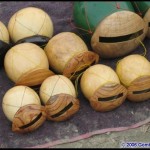 My Air Canada flight will be touching down soon in Vancouver and then I’ll connect down to Oregon. The ‘symphony in the sky’ is still ringing in my ears.
My Air Canada flight will be touching down soon in Vancouver and then I’ll connect down to Oregon. The ‘symphony in the sky’ is still ringing in my ears.
Check back next week and I’ll share some of the joys and pittfals of being a VIP at a Chinese festival.
See you out there somewhere!
David Gomberg

